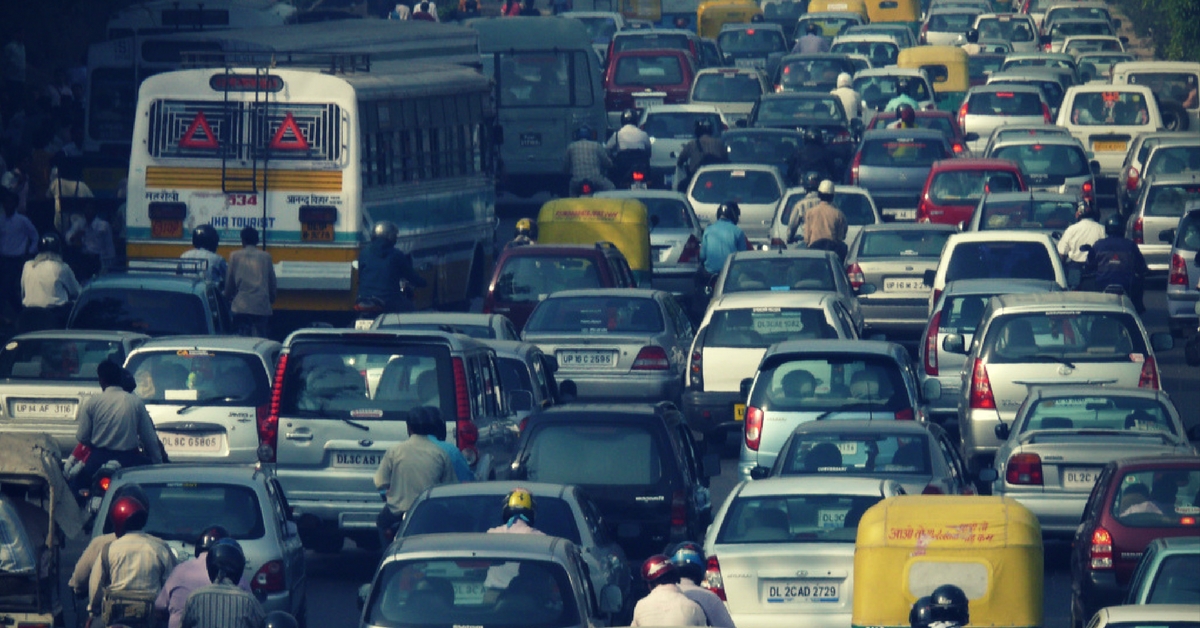Getting Stuck in Traffic Can Be a Thing of the past – If These Measures Are Implemented
Free left turns and roundabouts, etc may help curb congestion.

The extensive road network in India is the second largest in the world. However, India has less than 3.8 kilometres of roads per 1000 people, and less than 0.07 kilometres of highways per 1000 people. The traffic density in urban areas is so high that it is causing immense pollution issues as well. The recent Delhi smog problem is a result of the continuous build-up of pollutants over a considerable period.
Countries all over the world are adopting measures, to make sure people don’t spend half their life in traffic, and several smart tactics have resulted in the dramatic reduction of traffic snarls.

Here are a few suggestions India can implement, to clear up the traffic congestion being faced by the citizens on a daily basis.
1) Free left turns: The Guntur traffic police initiated measures to regulate traffic to accommodate the 2.5 lakh 2 wheelers, 30,000 four wheelers, 30,000 auto-rickshaws and hundreds of other vehicles like buses and lorries.
The free left system, implemented in the Naaz centre-Guntur’s busiest junction, was then provided in main centres and along main roads in Guntur, which helps curb traffic snarls, said Guntur Traffic DSP Ch Papa Rao. He added that the 8 km stretch of roads from Chuttugunta to Lakshmipuram has been freed up due to the new rule. Barricading lefts is clearly a prudent option!
2) Roundabouts:
The ‘carrefour à gyration’ may have been a French idea, but it was the British, who loved the roundabout and implemented it, Sixty years later, Frank Blackmore, an engineer, invented the modern roundabout, where entering vehicles yield to circulating traffic.
In America, the number of roundabouts in the last decade has doubled, according to the Insurance Institute for Highway Safety. Researchers at Kansas State University found that roundabouts caused 65% fewer delays than average.
This method can definitely be used to curb congestion in India.
3) Strategic Foot Over Bridges:
FOB’s, are a great way to reduce congestion because it prevents people from running into traffic, trying to cross the road—a common sight in India. New Delhi has many FOB’s, but they are in a decrepit state.
Times of India reported in December 2017, that 40% of foot over bridges in the city aren’t even used. Waste is strewn on the staircases and escalators, and maintenance is poor.
Many people do not use FOB’s because of the climb—a problem which can be averted by installing elevators and escalators, and most importantly—maintaining them well, so they don’t fall into disrepair.
If for some reason, a FOB isn’t a feasible installation, the other options include table-top or pelican crossings (a pedestrian crossing with traffic lights operated by pedestrians)
4) Pedestrian Zones:
Popular abroad, these are auto-free zones—areas only reserved for pedestrian use, where all or most automobile traffic is prohibited. Pedestrianisation creates better accessibility and mobility for pedestrians and creates significant drops in air and noise pollution.
Pedestrian zones allow bicycles, skaters and kick-scooters. In India, a citizen’s initiative in Goa made 18 June Road, Panjim’s main shopping boulevard, into a Non-Motorised zone. In Pune, similar efforts have been made to convert M.G Road, into an open-air mall.
5) Dedicated Parking Facilities:
To prevent stray parking, it would be beneficial to implement a dedicated parking facility, for each locality. This will ensure cars are not parked on the streets and have to pull out of their tight, narrow parking spaces in the face of fast oncoming traffic.
A dedicated parking space enables an orderly and organised method of storing cars, whether it is an hour or 10. It also frees up a car-width space on the streets, allowing for a more natural flow of traffic.
You may also like: How Mizoram’s Motorists Follow One Simple Rule to Avoid Traffic Jams & Ensure Congestion-Free Roads
The above measures are traffic-centric. As a citizen, you can take a few basic steps, to free up congestion. Car-pool, if and when possible. Ride a bicycle, or a two-wheeler for commuting short distances, and use the public transportation system. If everyone comes together, to make active choices, commuting in our country won’t be such a nightmare anymore.
Like this story? Or have something to share? Write to us: [email protected], or connect with us on Facebook and Twitter.
NEW: Click here to get positive news on WhatsApp!
If you found our stories insightful, informative, or even just enjoyable, we invite you to consider making a voluntary payment to support the work we do at The Better India. Your contribution helps us continue producing quality content that educates, inspires, and drives positive change.
Choose one of the payment options below for your contribution-
By paying for the stories you value, you directly contribute to sustaining our efforts focused on making a difference in the world. Together, let’s ensure that impactful stories continue to be told and shared, enriching lives and communities alike.
Thank you for your support. Here are some frequently asked questions you might find helpful to know why you are contributing?


This story made me
-
97
-
121
-
89
-
167













